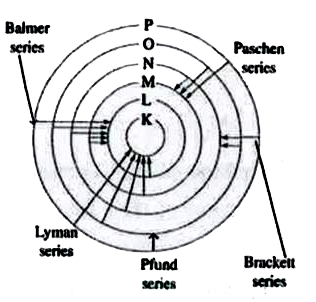Complete Solutions to Improve your learning of chapter REACHING THE AGE OF ADOLESCENCE of Class 8 book with complete answers and questions
| Class 8 | BIOLOGY |
| Chapter | REACHING THE AGE OF ADOLESCENCE |
| ANDHRA PRADESH SCERT | Improve your learning |
| Number Of Questions | 17 |
| Academic Year | 2023-24 |
How is adolescence different from childhood?
View SolutionWrite short notes on the following.
Secondary sexual characters
View SolutionWrite short notes on the following.
Adam s apple
View SolutionList out the changes in the body that takes place at the age of adolescence.
View SolutionMatch the following:

View SolutionWrite five suggestions to improve the performance of Red Ribbon club of your school.
View SolutionPrepare a three minute speech on behavioural changes in adolescents.
View SolutionWhy acne and pimples are common in adolescents?
View SolutionWhat can you suggest to your classmates to keep himself/herself clean and healthy?
View Solution13 years old Swaroop always think of his height. Can he improve his height? What do you suggest him?
View SolutionIf you have chance to talk with a doctor, what questions you would ask above adolescent emotions and changes in the body?
View SolutionNature prepares human body to reproduce her generations. What do you think of it?
View SolutionYou know that early marriage is a social taboo. Prepare some slogans to prevent this?
View SolutionThe only electron in the hydrogen atom resides under ordinary conditions on the first orbit. When energy is supplied, the electron moves to higher energy orbit depending on the amount of energy absorbed. When this electron returns to any of the lower orbits, it emits energy. Lyman series is formed when the electron returns to the lowest orbit while Balmer series is formed when the electron returns to second orbit. Similarly, Paschen, Brackett and Pfund series are formed when electron returns to the third, fourth orbits from higher energy orbits respectively (as shown in figure)
Maximum number of lines produced when an electron jumps from nth level to ground level is equal to `(n(n-1))/(2)`. For example, in the case of n = 4, number of lines produced is 6. `(4 rarr 3, 4 rarr 2, 4 rarr 1, 3 rarr 2, 3 rarr 1, 2 rarr 1)`. When an electron returns from `n_(2)` to `n_(1)` state, the number of lines in the spectrum will be equal to `((n_(2) - n_(1))(n_(2)-n_(1) +1))/(2)`
If the electron comes back from energy level having energy `E_(2)` to energy level having energy `E_(2)` then the difference may be expressed in terms of energy of photon as `E_(2) - E_(1) = Delta E, lambda = (h c)/(Delta E)`. Since h and c are constant, `Delta E` corresponds to definite energy, thus each transition from one energy level to another will prouce a higher of definite wavelength. THis is actually observed as a line in the spectrum of hydrogen atom. Wave number of the line is given by the formula `bar(v) = RZ^(2)((1)/(n_(1)^(2)) - (1)/(n_(2)^(2)))`
Where R is a Rydberg constant `(R = 1.1 xx 10^(7))`
(i) First line of a series : it is called .line of logest wavelength. or .line of shortest energy..
(ii) Series limit of last of a series : It is the line of shortest wavelength or line of highest energy.

Let `v_(1)` be the frequency of the series limit of the Lyman series, `v_(2)` be the frequency of the first line of the Lyman series, and `v_(3)` be the frequency of the series limit of the Balmer series
View SolutionWhat are your expectations about your parents and teachers?
View SolutionWhat are your expectations about your parents and teachers?
View SolutionAdolescence is the energitic stage. What health and good habits you want to develop?
View Solution
Improve your learning questions and complete solutions for chapter REACHING THE AGE OF ADOLESCENCE of NCERT Biology(Telugu) of Class 8